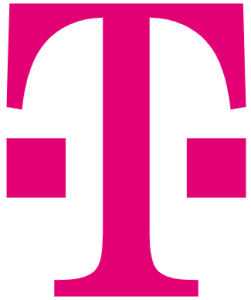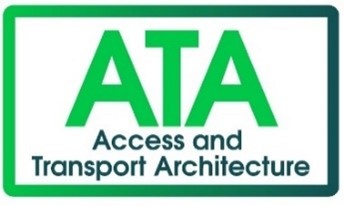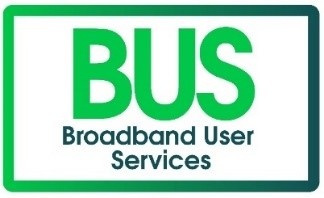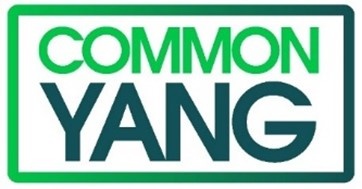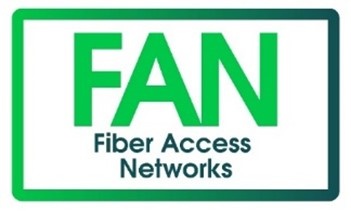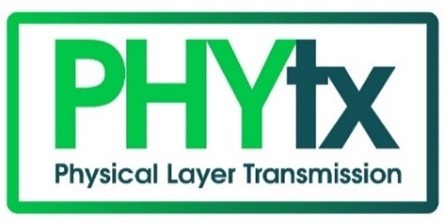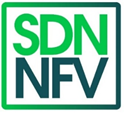Broadband Forum launches new website
The presentations from the BoF and the plenary sessions are available on the new Broadband Forum members’ collaboration wiki. Not signed up yet? You will need a new sign up for the wiki and the new “BitBucket” code repository site. There’s already around 200 pages. Click here to join the 200+ users who have registered since we opened the site a few months ago!
And don’t forget, if you haven’t seen it yet, please check out our all new public web site featuring new videos by the project leaders and new information about the key projects highlighted in this newsletter.
…………………………………………………………………………………………………………………………………………………….
Broadband Forum agrees Cloud CO next steps and plans operator survey
Organized by the Innovation Group, the Q4 meeting began with a BoF session which addressed the challenges of introducing the new technologies of NFV, SDN, 5G and the Internet of Things (IoT). The discussion covered topics such as management, operations, innovation, new skillsets and methodology.
CenturyLink’s Mike Bugenhagen kicked off the meeting with a presentation on how operators can migrate to NFV, with specific focus on what the Broadband Forum should do in this space to stay ahead and in line with the industry. Bugenhagen went on to explore the different types of architecture migration paths operators could follow to NFV and Cloud CO, highlighting a common platform for NFV to be deployed on that supports multiple applications as one approach operators could take. In regards to where the Broadband Forum fits into the picture, he suggested that carrying out a wide-scale survey of operators on their deployment requirements would be the best place to start in making a new RG specification.
Tom Anschutz, of AT&T, followed up Bugenhagen’s presentation with more detail on Cloud CO and the CORD project.
Following input from members which mostly saw support for the ideas presented, discussion moved to Understanding the Migration to Agile, showing that there are new principles in the Cloud that must be respected and understood more if operators are going to be truly agile. Technical Committee Chair Mike Fargano added to this with a comparison of High Level Data Centers and CO configurations and standards, including fire protection, electrical powers and HVAC.
The focus then turned to next steps, with a suggestion being made to record working instances of architecture that the Forum could embrace and develop into a set of understood systems that people can contribute to.
Concluding the session, CEO Robin Mersh announced the Forum will be carrying out an operator survey in the near future to gather information on different deployment techniques and the outcomes.
…………………………………………………………………………………………………………………………………………………….
Two Special Recognition awards acknowledge ten years of “sterling service”
Two Broadband Forum Special Recognition awards were handed out by Chairman Kevin Foster to CEO Robin Mersh and Executive Director Christine Corby in recognition of the pair’s “sterling service to the Forum and the board.”
Presenting the award during the Opening Plenary, Foster said: “These are two people who have lived Broadband Forum values, two people who have been instrumental in making the Forum what it is today and two people who have been key in driving forward transformation initiatives. They are always smiling and never negative, giving ten years of sterling service to the board and to the Forum.”
…………………………………………………………………………………………………………………………………………………….
Welcome to new members and first-time attendees!
The Broadband Forum is pleased to announce three new additions to its membership – Beijing Internet Institute (BII), Inango Systems Inc. and LEA Networks.
Headquartered in Paris, France, LEA Networks is a wholly-owned subsidiary of HF Company (NYSE Euronext: HF) and a worldwide provider of xDSL splitters/filters, HomePlug Powerline Carrier (PLC), Primary Surge Protection and SmartHome solutions for the telecommunications industry.
The BII is an independent, private company with a keen interest in promoting the development of the next-generation Internet: IPv6 and SDN, focusing on technology research, promotion, and testing and certification to support a secure, stable, extensible and interoperable Internet.
Finally, Inango Systems leverages open source packages to develop innovative software for networking equipment companies and has deep experience in Linux, communications protocols, management and encryption systems and application level software.
…………………………………………………………………………………………………………………………………………………….
Broadband Forum celebrates 25 years!
A celebration was held in Kansas City to mark the Broadband Forum’s 25th year, with members old and new attending to recognize the Forum’s successes.
Between dinner and entertainment, the meeting heard from the Forum’s President Tom Starr, Chairman Kevin Foster, Vice President Dave Sinicrope and Technical Committee Chair Mike Fargano, all of whom summarized the Forum’s past successes and milestones.
The focus was very much on the future, though, with all three speakers highlighting Forum’s ability to evolve with the industry as one of the key factors behind its continued success.
Thank you to our Meeting Sponsor!
Manuel Paul, Squad Lead Network Convergence at Deutsche Telekom and President at Broadband Forum delivered a keynote presentation highlighting the importance of personalized and context-aware services and networks that adapt to customers’ future needs.
Paul talked about the need for standardization in the industry to respond to market demands of a fast-moving technical world, advised that agility and speed should not come at the cost of quality, and vocalized the importance of deployable standards. Collaboration between Standards Development Organizations was underscored as a key factor in achieving this and striking the perfect synergy between open-source software and open standards. He also talked about Deutsche Telekom’s focus to enable a better digital life for customers, the benefits of increasingly virtualized networks and cloud-based services, as well as the role that disaggregation is playing in making this all possible.
“Reliability and great customer experience is key, and the DT brand has connotations of great customer trust,” Paul stated. “Our customer complaints have shrunk by 90% over the past ten years and we remain committed in turning our customers into our fans.”
On helping develop standards within Broadband Forum, Paul said: “It is an honor to collaborate with this esteemed community of industry leaders and experts. On behalf of Deutsche Telekom, thank you for the opportunity to play our part.”
____________________________________
Work Area Updates
For a full list of all Technical Reports published by Broadband Forum, click here. Please feel free to share this information with your colleagues, so they are engaged and aware of the developments of this work.
For additional insight and to get involved, sign up for access to Broadband Forum tools and access your account using your company email address.
ATA rounds off successful quarter with IPv6 security project and new open broadband project launched
The Access & Transport Architecture (ATA) Work Area delivers scalable, dynamic, and flexible architectures to support highly resilient connectivity for the next-generation of responsive services and applications. ATA’s focus includes specifying frameworks and real-time tools to deliver predictive connectivity and service performance. Read the full Spring Meeting 2024 update here: https://www.broadband-forum.org/ata-rounds-off-successful-quarter-with-ipv6-security-project-and-new-open-broadband-projects-launched
Smart home activities grow in BUS; latest updates of TR-181 and TR-398 published
The Broadband User Services Work Area aims to explore the necessary work for delivering an operator-grade smart home and improving the subscriber experience. Read the full Spring Meeting 2024 update here: https://www.broadband-forum.org/smart-home-activities-grow-in-bus-latest-updates-of-tr-181-and-tr-398-published
Common YANG’s latest work shaping the future of NETCONF/YANG-managed access networks
The work area targets to specify YANG modules that are applicable to multiple work areas, provide support to those same work areas for their specific YANG projects, and maintain YANG Best Current Practices, processes, procedures, and tools. Read the full Spring Meeting 2024 update here: https://www.broadband-forum.org/common-yangs-latest-work-shaping-the-future-of-netconf-yang-managed-access-networks
FAN collaborates with other Work Areas to progress new standards; officially launches sustainability project
The Fiber Access Networks (FAN) Work Area specifies and maintains PON architecture and nodal requirements, PON abstraction and mobile backhaul requirements. It is also responsible for PON test suites related to PON conformance and interoperability, and compliance test plans related to XGS-PON, NG-PON2, 25GS, 50G-PON, and Physical Medium Dependent (PMD)/Transmission Convergence (TC) Layer. Lastly, it is responsible for PON YANG data model specifications. Read the full Spring Meeting 2024 update here: https://www.broadband-forum.org/fan-collaborates-with-other-work-areas-to-progress-new-standards-officially-launches-sustainability-project
PHYtx Work Area starts the third issue of TR-301 and continues efforts of the MoCA AccessTM Performance Test Plan
The Physical Layer Transmission Work Area aims to enable multi-vendor interoperability in deployments for both access and in-premises networks. Read the full Spring Meeting 2024 update here: https://www.broadband-forum.org/phytx-work-area-starts-the-third-issue-of-tr-301-and-continues-efforts-of-the-moca-accesstm-performance-test-plan
Two key documents on AIM and disaggregation published, with more specifications close to fruition for SDN/NFV
The SDN/NFV Work Area focuses on the introduction of Software Defined Networking (SDN) and Network Functions Virtualization (NFV) in conjunction with general purpose hardware to create the basis for cloud-based, edge, and access networks. Read the full Spring Meeting 2024 update here: https://www.broadband-forum.org/two-key-documents-on-aim-and-disaggregation-published-with-more-specifications-close-to-fruition-for-sdn-nfv
WWC continues Multi-tenant FWA efforts and Phase 18.1 work, IMS for 5G-RG and WWC CUPS specifications published
The work area aims to deliver more value with deployment options for integrated, wireline, and mobile operators and suppliers. It focuses on optimizing the Total Cost of Ownership by consolidating network, common control plane, and streamlined backend by a comprehensive, well-specified, deployed Wireless-Wireline-Convergence architecture and functions to deliver broadband services with the 5G Core. Read the full Spring Meeting 2024 update here: https://www.broadband-forum.org/wwc-continues-multi-tenant-fwa-efforts-and-phase-18-1-work-ims-for-5g-rg-and-wwc-cups-specifications-published
OB-CAS project to stimulate open innovation for the broadband industry; calls for involvement of application providers in data analytics and network automation software
The OB-CloudCO Application Software Development Kit (OB-CAS) project is set to create a network management application ecosystem for the broadband industry. The project will develop an open platform software environment to foster open innovation. Read the full Spring Meeting 2024 update here: https://www.broadband-forum.org/ob-cas-project-to-stimulate-open-innovation-for-the-broadband-industry-calls-for-involvement-of-application-providers-in-data-analytics-and-network-automation-software
The OB-STAMP project launches - a gamechanger for network monitoring
The OB-STAMP (Open Broadband – Simple Two-Way Active Measurement Protocol) tool aims to reduce the cost and time of deploying and implementing infrastructure for measuring network latency in service providers’ networks. Read the full Spring Meeting 2024 update here: https://www.broadband-forum.org/the-ob-stamp-project-launches-a-gamechanger-for-network-monitoring
OB-USP-Agent closes in on Heron release; will help ISPs roll out value-added services
The OB-USP-Agent (OBUSPA) project is focused on creating a reference implementation of the User Services Platform (USP) specification from an "Agent" perspective. It aims to help ISPs offer differentiated value-added services at a faster pace, allowing individual components of the network to be upgraded without the need to upgrade the whole firmware. Read the full Spring Meeting 2024 update here: https://www.broadband-forum.org/ob-usp-agent-closes-in-on-heron-release-will-help-isps-roll-out-value-added-services
OB-UDPST project team collaborates with a network operator regarding large-scale rollout
The Open Broadband-User Datagram Protocol Speed Test (OB-UDPST) project produces an open source implementation of a tool to perform IP layer capacity metrics and measurement. Read the full Spring Meeting 2024 update here: https://www.broadband-forum.org/ob-udpst-project-team-collaborates-with-a-network-operator-regarding-large-scale-rollout
OB-5WWC Project Team’s 5G-RG software architecture open for comments
Open Broadband-5WWC (OB-5WWC) is an Open Source project focused on bringing the full benefits of the 5G ecosystem to fixed-line services and offering a full end-to-end solution to operators. The aim is to create a reference implementation of the Broadband Forum specified Wireless-Wireline Convergence solution for 5G capable Residential Gateways (5G-RGs), providing shorter time-to-market for products and reduced development times and cycles. Read the full Spring Meeting 2024 update here: https://www.broadband-forum.org/ob-5wwc-project-teams-5g-rg-software-architecture-open-for-comments
For more on the work of The Broadband Forum’s Work Areas, please visit the wiki here: https://wiki.broadband-forum.org/display/BBF/BBF+Work+in+Progress+-+Projects%2C+Project+Streams%2C+and+Jira+Links
Upcoming BASe events
- ‘The Future of the Connected Home’ Omdia Survey Webinar - March 26
- BASe at OFC: Meeting Rural Broadband Needs with High Capacity PON - March 28
- PON Interoperability vBASe Webinar - April 11
- Future of PON Telco vBASe Webinar - May 9
- BASe at ANGA COM 2024 – Converging the Access to true Multi-Service Fiber – May 14 – May 16
Save the dates! Broadband Forum face-to-face 2024 meetings
- June 17-20, Summer 2024 Meeting, Incheon, South Korea
- November 18-21, Fall 2024 Meeting, the Americas (TBD)
Welcome to our new and returning members!
We welcomed a mix of new members and guest companies during the Spring Member Meeting 2024. We had 158 registered attendees, with 12 first-time attendees and 16 guests from 12 companies. Our new members include: Alethea, Evolution Digital, Go Fiber, Positron Access Solutions, Sichuan Changhong NeoNet Technologies Co., Ltd., Tadtelmax, and Veego.
Are you interested in becoming the next member of the industry’s leading standards body in defining broadband networks? Broadband Forum membership will not only accelerate your company’s progress but enable you to become a key influencer in developing 5G, the Cloud, the connected home and access networks.
We have a range of membership options for companies of all sizes, from startup companies to large corporations and not-for-profit organizations. Our new regional Operator Membership category has further opened participation; take a look for further details of the access level privileges, benefits and requirements.
To learn more about the benefits of membership, watch the video interview with Rhonda Heier, Director of Membership Development, as Rhonda discusses the value of the Broadband Forum membership here or email rheier@broadband-forum.org for more information.
Work Area Updates from Kansas City
Architecture and Migration Work Area completes two NFV specifications
Progressing the Forum’s work on SDN and NFV, TR-345 on migration to NFV has passed final ballot and will be publicly available on the website in the near-future. TR-345 defines models for introducing NFV into legacy networks to facilitate the network transformations currently underway in the industry.
The Framework for Virtualization (TR-359) has also passed final ballot and will be available on the website soon. This is a fundamental document that will underpin future Broadband Forum work in NFV by defining an ETSI-aligned architecture to evolve the Multi-Service Broadband Network (MSBN). Work is already underway to augment the architectural models with SDN concepts emerging from the completed SD-365 study. This is projected to go to straw ballot Q2 2017.
A study on the impact of 4K video on the network has been completed and the group is now looking at one of the first outcomes. This is improved methods of video delivery for OTT with the cooperation of carriers. A project has been initiated to look at multicast distribution of ABR.
The project on performance monitoring from customer equipment to the IP edge is continuing and is expected to be technically completed during 2017 Q2. This will enhance providers’ ability to monitor Service Level Agreements (SLAs) and improve network operations.
Work on Broadband Assured Services (BAS) continues with the current focus being on refining the use cases that would be input into the architecture.
Finally, the group is looking at other areas that will be foundational to the network transformations that will roll-out over the next decade. This relates to top down models and the associated architectural principles that will guide the Forum’s work.
Broadband User Services Group hosts real-time USP hackfest
The Broadband User Services Work Area had an exciting week with a real-time "hackfast" to test out the first stages of its new protocol, the User Services Platform (USP). USP is the natural evolution of the popular TR-069 protocol into the IoT world and consumer electronics. It helps solve the very real problems those industries have with managing devices and systems that have multiple stakeholders and often have not dealt with connected environments before.
The hackfest successfully operated the control of smart lights through a Z-wave proxy, communication through a controller between a motion sensor and camera, and achieved successful interop of basic message sequences (requests and responses) between three different implementations. The hackfest let the group take a huge leap toward its target of publishing the USP specification and open source components by Q2 2017.
The group is also tackling the chaotic world of Wi-Fi with respect to broadband subscribers. Very often, service providers are on the hook to help end-users have quality Wi-Fi - a term coined “Carrier Grade Wi-Fi.” The group began joint work with the Physical Layer Transmission Work Area on defining use cases, requirements and test procedures for the performance and quality of end-user Wi-Fi networks.
FTTdp Work Area takes TR-355 to the next level
Overall, 2016 has been a tremendous year for the Fiber to the Distribution Point (FTTdp) Work Area, with the publication of TR-355 and TR-371, defining the YANG modules for G.fast and FTTdp Management, as well as major work on defining the architecture and requirements for the FTTdp ecosystem. This work enables the management of G.fast and VDSL Distribution Point Units (DPUs) and allows the Persistent Management Agent (PMA) to use Netconf/YANG to manage the DPU.
The FTTdp management project stream continued to progress the next revision of TR-355, further improving and enhancing several Netconf/YANG management-related aspects. In addition, the group worked in conjunction with the common YANG Project Stream to resolve straw ballot comments on the common YANG module specification (WT-383). The aim is to publish an extensive set of modules covering both DPU-specific, as well as more generic YANG modules. The group has also progressed the management architecture that will enable similar control from the PMA back to the network management systems and OSS. This has the potential to enable operators to reduce network management complexity.
The FTTdp Architecture project stream progressed well on the second issue of TR-301, covering several enhancements including certificate management, PMA discovery, software image management and bulk statistics collection. With all contributions handled at the meeting, the group has agreed in principle to proceed to straw ballot and start the comment resolution process.
Moving forward, the group intends to dive into the real-life interoperability challenges when connecting the PMA to the DPU, by defining an interop test plan.
FAN begins preparations for future converged PON world with a workshop with key partners
The Q4 meeting saw FAN publish the WT-280, ITU-T PON in the context of TR-78. This project enhances ITU-T PON with various service requirements beyond that of TR-156, helping to make ITU-T PON much more suitable for the Fiber-to-the-Home (FTTH) industry.
As PON migrates, there is a strong trend emerging that both ITU-T PONs and IEEE PONs will share more and more in common in order to make the most cost-effective industry base. Collaboration with Full Service Access Network (FSAN), ITU-T SG15 Q2 and IEEE802.3 will begin to make a unified PON church. Ideas from the whole industry have been considered and further steps have been agreed for more work to be done in promoting PON convergence work. These four groups will be working on how to cooperate and develop a unified plan to work on PON convergence – look out for future announcements.
The new white paper project, MD-396, gigabit access over FTTx, aims to promote PON deployment in multiple applications – that is, to use PON as a transportation technology to backhaul all kinds of access medium (fiber, DSL, Cable, etc.) to provide gigabit access pipe.
A proposal made at the Atlanta special meeting by NTT has resulted in a new Project Stream being kicked off in Kansas City for PON abstraction interfaces for time-critical applications.
YANG model projects, i.e. WT-385 (YANG model for management of ITU-T PON), WT-394 (YANG Models for Management of PON ONUs) and WT-395 (NETCONF Management of PON ONUs Architecture Specification), are of high interest to the community and the whole group has agreed on how to start further building PON related YANG models.
Innovation Group hosts BoF session on ‘softwarization’ and advances work on 5G
The Innovation Group kicked off the Q4 meeting with a BoF session which explored the challenges of migrating operator networks towards more ‘softwarization’, including SDN, NFV and Cloud. Discussion and a first conclusion is for the Forum to organize a wide survey among Service Providers focusing on which migration path they plan to take.
On net neutrality, a first position paper will be reviewed in a November teleconference, with the aim of involving people that deal with regulation.
With the 3GPP 5G cooperation in mind, the Innovation Group created a new project stream on 5G convergence where new work focusing on the points highlighted on the 3GPP agenda for 5G has been approved. During the session, the group reviewed several propositions focusing on specific work which asks people to volunteer to engage further. The group is proposing a date in February 2017 to meet with 3GPP SA2.
Routing and Transport Work Area is smokin'!
The latest work on the Broadband mobile backhaul architecture is entering the approval process. The last call for comments has been issued and the comments received will begin to be resolved between now and the Q1 2017 meeting. It is anticipated the work will complete after the Q1 2017 meeting. The amendment adds new technology from ITU-T SG15/Q13 on time synchronization as well as IETF resiliency and scalability enhancements to ensure highly available and reliable services over the mobile network. These, combined with the existing TR-221 architecture, produce a solution ready for LTE Advanced and initial 5G architectures. The group continues to study challenges to the transport and IP networks to support 5G and the innovative services brought about by the 2020 mobile network.
The Ethernet Virtual Private Network (EVPN) architecture and requirements (TR-350) continues to progress through Phase 2, focusing on point-to-point and point-to-multipoint service implementation. The work is nearing the point where the approval process will be started. The final content should be added between now and the Q1 2017 meeting. Phase 2 architects the Metro Ethernet Forum (MEF) Carrier Ethernet service definitions for both E-LINE and E-TREE, and is based on Internet Engineering Task Force (IETF) Request for Comments (RFC)s. The work on EVPN is focused on making the network providing Ethernet services more efficient and resilient by providing higher quality services for new and demanding applications, such as cloud and data center interconnect, evolution to 5G backhaul, UHD video distribution and the IoT. For more detail please see the EVPN white paper and the EVPN tutorial on the BBF website.
The Packet Optical Evolution project has completed its evaluation of the drivers for WT-319 Part C, as well as the accompanying updates to the TR-319 tutorial and whitepaper. The project welcomes contributions to these efforts and will continue the project based on contributions. The project has already produced specifications, with significant input from Forum partner organizations ITU-T SG15 and IETF, integrating the packet network with the optical network. The tighter integration and more seamless operation brings with it potentially significant OPEX and CAPEX savings for operators as they balance the need for faster transport network infrastructure with raising average revenue per user.
Those interested in the details of the projects and progress are encouraged to contact the Area Director and/or Project Stream Leads for suggestions on how to get involved and contribute.
Physical Layer Transmission Work Area progresses G.fast certification
The G.fast testing and certification project stream continued to address issues in ID-337 raised from the beta trial program. Once this program has been completed, a final ballot for an internal report (IR-337) will be initiated and an abstract test plan (ATP-337) will be prepared for publication.
Work continued on the project to develop a G.fast performance test plan (WT-380). Discussions focused on the test set-up and test loops for the test plan.
In the very-high-bit-rate Digital Subscriber Line (VDSL2) project stream, the group finalized the straw ballot on the WT-114 Issue 3 related to the performance requirements for retransmission profiles. This will now go to final ballot. The group continued to work on the amendment to Issue 3 related to the performance tests for longer reach VDSL2.
Work has started on new project WT-400, testing of bonded G.fast links.
In the home networking project stream, the group decided to exchange information with ETSI for the development of a test plan for verifying the functionality of a system that mitigates interference between DSL and power line systems based on ITU-T G.9977. In addition, the group completed straw ballot comment resolution for WT-208 Issue 2 and decided to move the document to final ballot.
A new project stream for carrier-grade Wi-Fi was formed. Two study documents have been initiated; one on Wi-Fi in premises installation and diagnostics (SD-401) and another on Wi-Fi in-premises performance testing (SD-398). The group will continue to inform the Wi-Fi Alliance, Wireless Broadband Alliance and IEEE 802.11 about this work as it progresses.
Four virtualization projects progressed by SDN and NFV Group
The SDN and NFV Working Area had a busy meeting, having made substantial progress on four separate projects since Q3.
The Cloud CO project is drawing a large amount of interest and participation, developing a next-generation CO solution that incorporates SDN and NFV running on a Cloud-like infrastructure. This activity involves de-composing and disaggregating legacy Broadband Network Gateway, access node and CPE systems into various physical and virtualized network functions with SDN control. Expected benefits include simplifying the network by reducing redundant functions and optimizing service processing flows. The level of participation seen in this project at Q4 has been so great that the group is currently planning an Interim Meeting to accelerate the work and has incorporated online collaboration in its workflow.
Following the Q4 meeting, the Software Defined Access Network (SDAN) work is now technically complete and will proceed to straw ballot. This work will enablesoftware-defined control of all the major access technologies of copper, fiber and wireless. SDAN enables increased agility of networks through bringing software control to the edge of the network.The first specification (WT-370) in Fixed Access Network Sharing (FANS) architecture is now technically complete and will progress to straw ballot. FANS applies virtualization to copper access coupled with slicing techniques to enable multiple operators to share one physical network. The second project which builds on 370 to define virtual interface requirements has also progressed.
Finally, the virtual Business Gateway (vBG) – one of the most awaited applications of NFV – is continuing, enabling a new generation of flexible business services. This is expected to go to straw ballot before the next quarterly meeting, with any comments due to be resolved at the Q1 2017 meeting.
Wireline-wireless Convergence Work Area continues 5G discussions
This work area addresses the needs of converged operators, which have both wireline and mobile networks deployed and are in a position to leverage all of their assets with combined subscriber offerings.
Hybrid access combines wireline and wireless access to enhance reliability, provide fast fulfilment and offer greater bandwidth. Phase 2 of this work on specifying solutions (WT-378) was progressed at the Q4 meeting.
Discussions have continued with respect to the role of fixed broadband and 5G networks, with increasing participation bringing further clarity.
Documents approved include:
- TR-196 Issue 2 Corrigendum 3 Femto Access Point Service Data Model
- TR-273 Amendment 1 Testing of Bonded, Multi-Pair xDSL Systems
- MR-276 Lessons Learned from IPv4 to IPv6 Migration and Guidance for Future Deployment
- TR-280 ITU-T PON in the context of TR-178
- TR-345 Broadband Network Gateway and Network Function Virtualization
- TR-356 Alternate Management Path from Home Gateway
- TR-359 A Framework For Virtualization
These documents will be published in the following days, however for a full list of all work in progress, click here. Please feel free to share this information with your colleagues, so they are engaged and aware of the developments of this work.
…………………………………………………………………………………………………………………………………………………….
Broadband Forum in the news
Since the Q3 meeting, the Broadband Forum has announced the publication of two new documents – TR-317 and TR-355 – drawing attention from media and journalists.
In addition to Press Releases, the Forum also received requests for longer in-depth features on TR-317, including from IT Pro Portal.
Briefings were also carried out at Broadband World Forum with Telecom TV and Light Reading recording video interviews with Robin Mersh and Computer Weekly and Mobile Europe requesting face-to-face briefings.
…………………………………………………………………………………………………………………………………………………….
Forthcoming Industry Events
- ITU World Telecom 2016: November 14 – 17, Bangkok, Thailand
- Globecomm: December 4 – 8, Washington DC, USA
Contact information
Questions or ideas? Contact the Broadband Forum
at +1 510.492.4020 or email info@broadband-forum.org
.
or add comments at the foot of this pages


